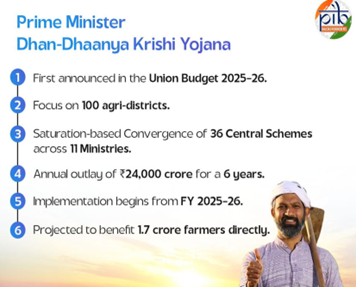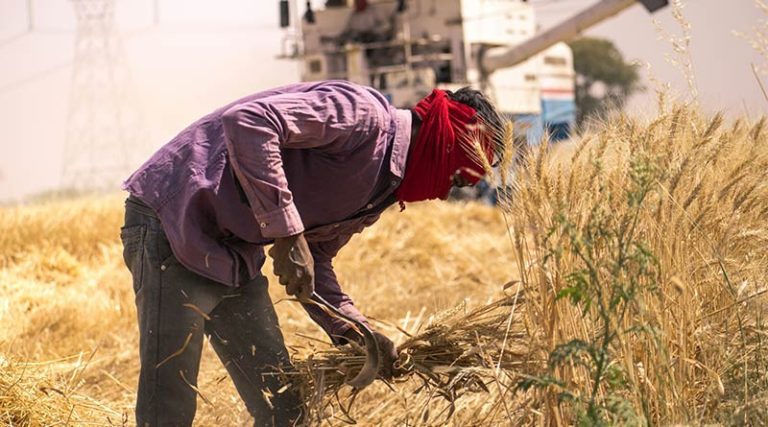SYLLABUS
GS-3: Issues related to direct and indirect farm subsidies and minimum support prices; Public Distribution System-objectives, functioning, limitations, revamping; issues of buffer stocks and food security; Technology missions; economics of animal-rearing.
Context:
Recently, the Prime Minister of India launched Pradhan Mantri Dhan-Dhaanya Krishi Yojana to promote self-reliance and farmer welfare.
Pradhan Mantri Dhan Dhaanya Krishi Yojana (PMDDKY 2025)

- The PM Dhan-Dhaanya Krishi Yojana was inaugurated at the Indian Agricultural Research Institute (IARI) in New Delhi on 11 October 2025.
- PMDDKY is a major agricultural reform initiative aimed at improving productivity, sustainability, and profitability in Indian agriculture.
- Under this scheme, farmers get direct financial help, new farming tools, crop insurance, and better market access.
- The scheme is implemented by the Ministry of Agriculture and Farmers’ Welfare with support from central, state, and district-level bodies.
Objectives of PMDDKY
- To increase crop yields by 20–30% using quality seeds and advanced technology.
- To reduce monsoon dependency through modern irrigation systems.
- To provide mechanisation and affordable tools to enhance efficiency.
- To build storage infrastructure to cut post-harvest losses below 5%.
- To offer credit, subsidies, and direct market access to double farmer income by 2030.
Scheme Integration and Governance
- PMDDKY integrates 36 existing agricultural schemes from 11 ministries, including:
- PM-KISAN (cash transfers)
- PMFBY (crop insurance)
- PMKSY (irrigation)
- Rashtriya Krishi Vikas Yojana (RKVY)
- Implementation is monitored through:
- National Steering Committee at the central level.
- State-level nodal committees for coordination.
- District Dhan Dhaanya Samitis led by District Collectors for local execution.
- A digital dashboard tracks 117 Key Performance Indicators (KPIs) such as yields, credit access, and infrastructure utilisation.
Why PMDDKY Was Launched
- Low Crop Productivity: Several districts in Uttar Pradesh, Bihar, and Madhya Pradesh have yields below the national average due to poor soil, limited irrigation, and outdated methods.
- Dependence on Monsoons: Around 52% of farmland relies on rainfall, causing instability during droughts or unseasonal rains.
- Small Landholdings: About 86% of farmers hold less than 2 hectares, earning an average monthly income of ₹10,218 (NSSO 2019).
- Post-Harvest Losses: Nearly 20% of crops are lost due to a lack of cold storage and warehouses, causing annual losses of ₹50,000 crore (ICARs, 2023).
Significance of the scheme
- This scheme represents a major step toward transforming underperforming agricultural districts by addressing yield gaps, poor irrigation, and lack of infrastructure.
- This initiative strengthens agricultural governance by integrating 36 schemes under one coordinated framework for efficient resource utilisation and outcome-based monitoring.
- This programme enhances farmers’ resilience by promoting modern irrigation systems, mechanisation, and access to markets and credit facilities.
- This scheme contributes to achieving national goals of food security and rural prosperity by improving productivity, reducing post-harvest losses, and increasing farmer income.


